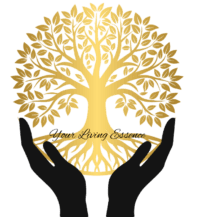
There was a time when I couldn’t seem to escape the endless emails and long hours, leaving me drained and disconnected from the things I love. In today’s fast-paced world, finding harmony between your personal life and work is more important than ever. This guide is packed with practical tips and real-life strategies to help you create a healthier balance that works for you.
By setting clear boundaries, prioritizing self-care, and embracing simple changes, you can reduce stress and boost your productivity. It’s time to take back your days and make room for the things that truly matter—whether that’s family time, a hobby, or just a moment of peace.
So, let’s dive into how you can start making small tweaks to your routine and create a life where work is left behind us once we walk out of the office!
Key Takeaways
- Setting boundaries is essential for maintaining a healthy work-life balance. This sounds hard, but we don’t have to volunteer to help assist in every project. Once in a while is fine, but if extra projects are becoming a consistent within the office, possibly another position may need to be created. Each employee giving their best at their job with the creation of a new employee position actually increases overall company revenue instead of employees doing 3/4 to 50% of their jobs.
- Prioritizing self-care can significantly reduce stress and improve productivity, remember, “You do you too”! Your sanity is truly the harmony of the house. You’ll find you can get a whole lot more done when you feel better.
- Simple changes to your daily routine can make a big difference in achieving balance. Heck, I do not fold socks! – lol, such a hassle to chase after and stress about matching those little buggers, especially when half the time it’s in fashion to wear them mismatch anyway. We have a sock basket – grab and go! And the days matching socks matter, there are plenty of white socks to grab too!
- Embracing flexibility and time management techniques can help you spend more time on what matters most. I know this new era of “AI” (artificial intelligence), seems scary, like the terminator movies we grew up on. But in actuality, taking a little time, watching a tutorial (great ones on YouTube), checking out digital planners, even using some of the already built in settings on our phones can really simplify things in the long run. Hey, I even had a hard time letting go of the “To-Do” lists and post it notes hanging around all throughout the house!
- Creating a schedule that includes both work and personal activities ensures a more balanced life. Need I say more!
Top Tips for Achieving Work-Life Balance
Let’s face it—juggling work and personal life can feel like a constant tug-of-war. But what if I told you there are simple, everyday strategies that can make a real difference? I’ve learned this firsthand, and I’m excited to share some practical tips that have helped me and many others create a healthier life balance.
Actionable Daily Strategies
One of the most impactful changes I made was adopting a structured routine. By setting clear start and end times for my workday, I created a boundary that helped me avoid the trap of “work expanding to fill the time allotted.” This simple shift allowed me to reclaim my evenings and weekends for the things that matter most.
Must-Try Phone Setting Tips
- Use a digital calendar: Block out time for both work and personal activities. This visual reminder helps prevent overcommitting and keeps your priorities clear. Google calendar can sync with apps installed on your phone, your email, straight from your text messages, or by manually typing what you need to block the time for, right in. And just like your alarm, you can set reminders to notify you a day before, hour before, actually any day or time before.
- Set boundaries with emails: Designate specific times to check work emails and avoid the temptation to respond outside of work hours. Set yourself a reminder on your phone alarm, that way it’s out of site out of mind and you can focus and enjoy being in the moment.
- Take short breaks: Even a 10-minute walk or a few deep breaths can reset your mind and reduce stress. Get those “happy juices” flowing, endorphins and dopamine are naturally produced by exercise, that in itself will start to uplift your mood.
- Resist overcommitting: Learn to say no to tasks that don’t align with your priorities or values. You can do this! Bring out your fire power at the next staff meeting, bring up a new employee position along with the increase in revenue and reduction in errors and overtime – that should make any boss happy.
“You can’t pour from an empty cup. Take care of yourself first.”—Unknown
These strategies aren’t one-size-fits-all. The key is to experiment and find what works best for your unique situation. Even small adjustments, can lead to significant improvements in managing stress and boosting your overall well-being. Remember, consistency is key—stick with the routines that bring you the most peace and productivity.

Family and Social Connections
Spending quality time with family and friends can drastically improve your overall life balance. I’ve found that simple practices like having a family dinner or planning a weekend outing can make a huge difference. These moments not only strengthen relationships but also provide a much-needed break from work-related stress.
Research shows that individuals who prioritize personal connections experience a significant boost in mental health and life satisfaction. By staying socially active, you can reduce stress and create a support system that enriches your personal life.
Balancing Hobbies and Responsibilities
It’s easy to let work take over, but making time for hobbies and personal interests is crucial. Whether it’s painting, playing music, or even gardening, these activities can help you recharge and bring joy to your life.
Don’t be afraid to schedule time for these pursuits. Even a few minutes a day can make a difference. Remember, life is about more than just work—it’s about the people and activities that bring you happiness and fulfillment.
Take a moment to reflect on how you currently balance your personal life and relationships. Are there areas where you could invest more time and care? By nurturing these connections and prioritizing your personal life, you can create a more balanced and fulfilling life.
Prioritizing Mental Health and Self-Care
Have you ever felt like stress is weighing you down, making it hard to focus on what truly matters? I’ve been there too. Mental health is the foundation of a healthy life balance, and neglecting it can lead to burnout and dissatisfaction.
Stress Management and Mindfulness Practices
Mindfulness has been a game-changer for me. Simple practices like deep-breathing exercises or short meditation breaks can make a big difference. I’ve found that even five minutes of focused breathing can clear my mind and reduce stress.
Here are some actionable tips to get you started:
- Deep-breathing exercises: Inhale deeply for four counts, hold for four, and exhale for six. This helps calm your mind.
- Brief meditation breaks: Take five minutes during your busy day to sit quietly and focus on your breath.
- Reflect and recharge: Journaling or a short walk can help you reset and gain perspective.
Small changes can lead to big improvements. Taking care of yourself isn’t selfish—it’s essential. I’ve seen how stepping back for self-care can turn a tough day around.

Consider adding one new self-care practice to your daily routine. Whether it’s meditation, a walk, or simply sitting quietly, it’s worth it. Remember, taking care of your mental health is the first step toward a more balanced and fulfilling life.
Integrating Productive Work Habits and Relaxation
Have you ever wondered how to blend your work and personal life seamlessly without feeling overwhelmed? I’ve found that the key lies in embracing flexibility and making intentional choices about how I spend my time.
Finding Time for Breaks and Vacations
One of the most impactful changes I made was adopting a structured routine. By setting clear start and end times for my workday, I created a boundary that helped me avoid the trap of “work expanding to fill the time allotted.” This simple shift allowed me to reclaim my evenings and weekends for the things that matter most.
I rely on digital calendar apps and to-do lists to organize my day. Tools like Google Calendar and Todoist help me block out specific times for both work and personal activities. This visual reminder prevents overcommitting and keeps my priorities clear.
Even a short break or weekend getaway can reset your mindset and reduce stress. I’ve found that taking a 10-minute walk or a few deep breaths can make a big difference. Remember, consistency is key—stick with the routines that bring you the most peace and productivity.
By segmenting my day into work blocks and breaks, I avoid burnout. Prioritizing tasks and being flexible when unexpected events occur is crucial. I’ve learned to say no to non-essential tasks and delegate when possible.
Experimenting with different organizational tools has been key. Whether it’s Trello for projects or Focus@Will for concentrated work sessions, finding the right fit makes all the difference. Remember, even small tweaks to your schedule can free up time for self-care and relaxation.
The goal is to create a day that reflects your priorities and fosters a sense of harmony between work and personal life. By combining productive habits with planned relaxation, you can achieve a life where work and personal time coexist harmoniously.
Conclusion
As we wrap up our journey through the world of work-life balance, I hope you feel empowered to take the next step toward a more harmonious life. Remember, it’s all about small, intentional changes that add up over time.
The strategies we’ve explored—from setting boundaries to embracing downtime—aren’t just tips; they’re tools to help you reclaim your life. I’ve seen firsthand how these practices can transform your days, making room for what truly matters.
Start with one change today. Whether it’s a short break, a family dinner, or a moment of mindfulness, these small steps can lead to big improvements. And remember, it’s okay to adjust as you go. Life is dynamic, and so is your balance.
Take care of yourself and nurture your relationships. A balanced life isn’t just about work and play—it’s about living fully. Thanks for joining me on this journey. I hope you leave here feeling hopeful and ready to create a life that reflects your priorities.
